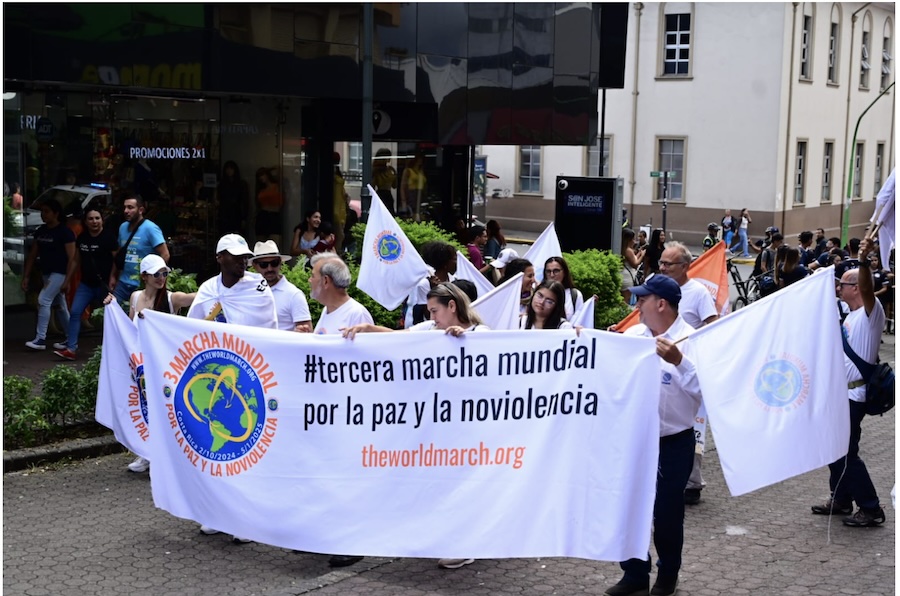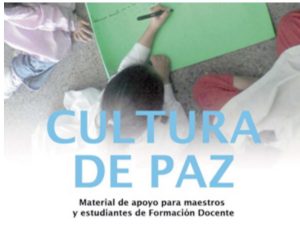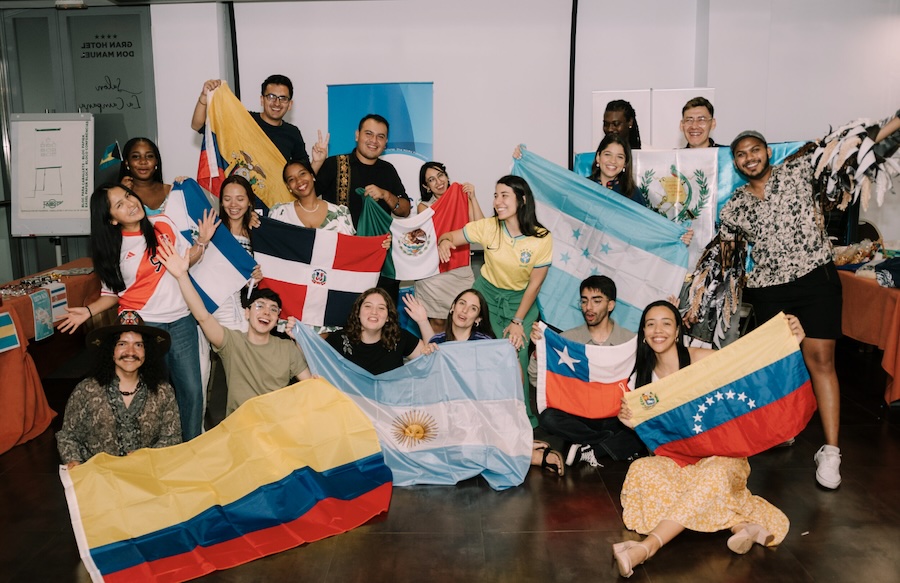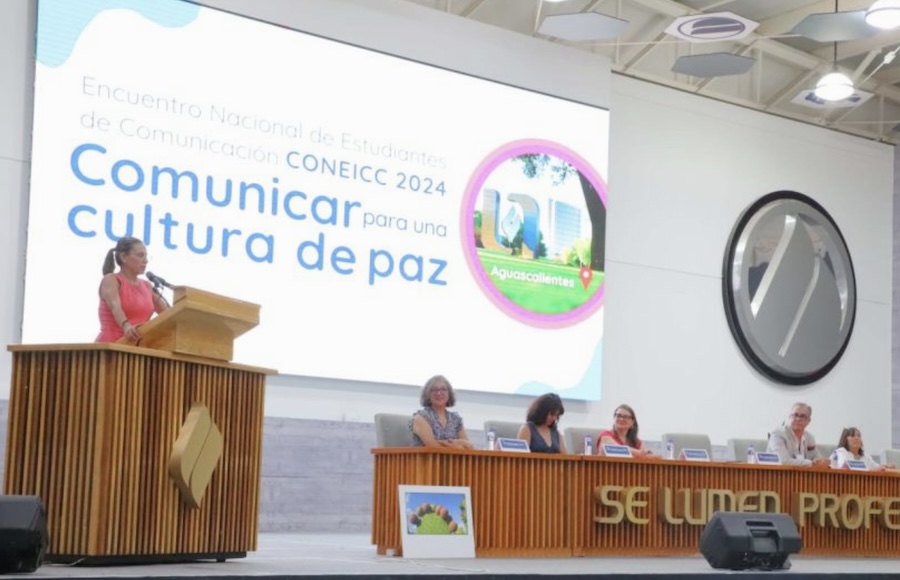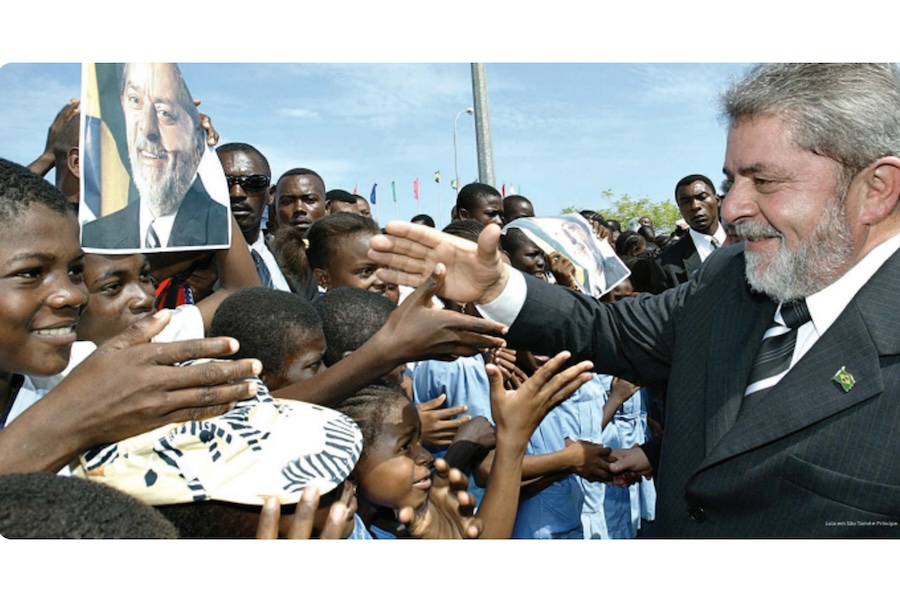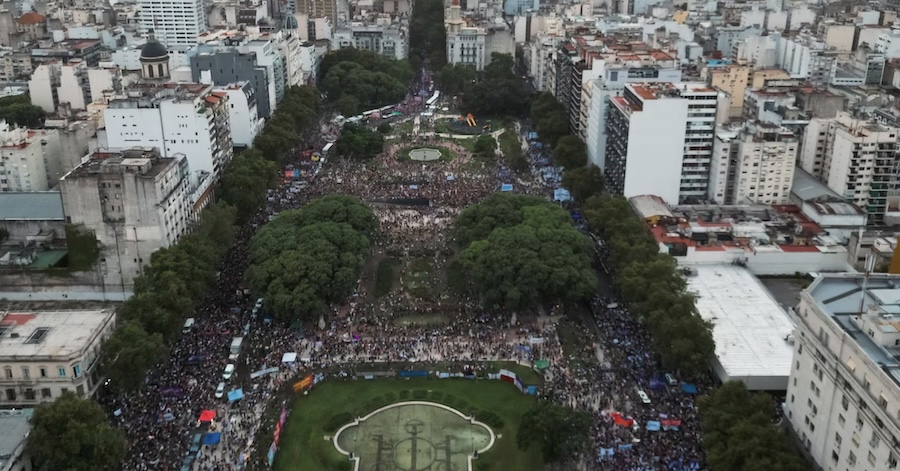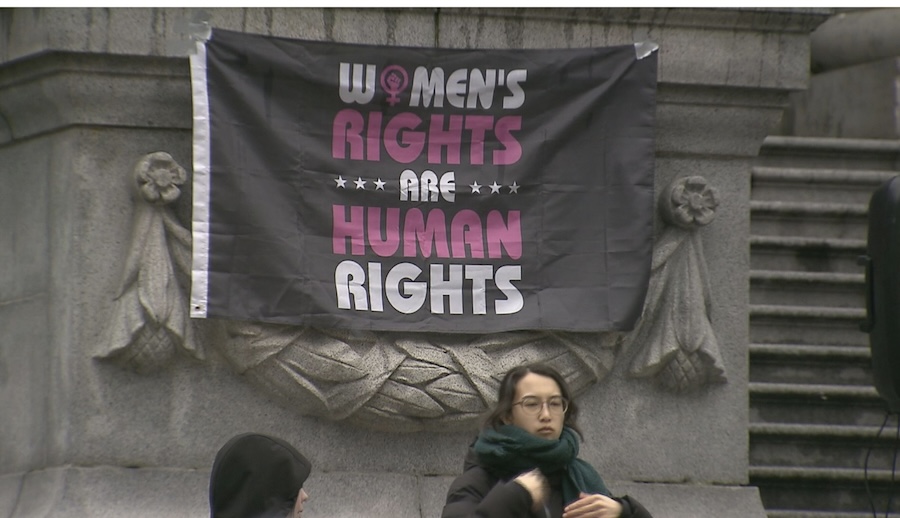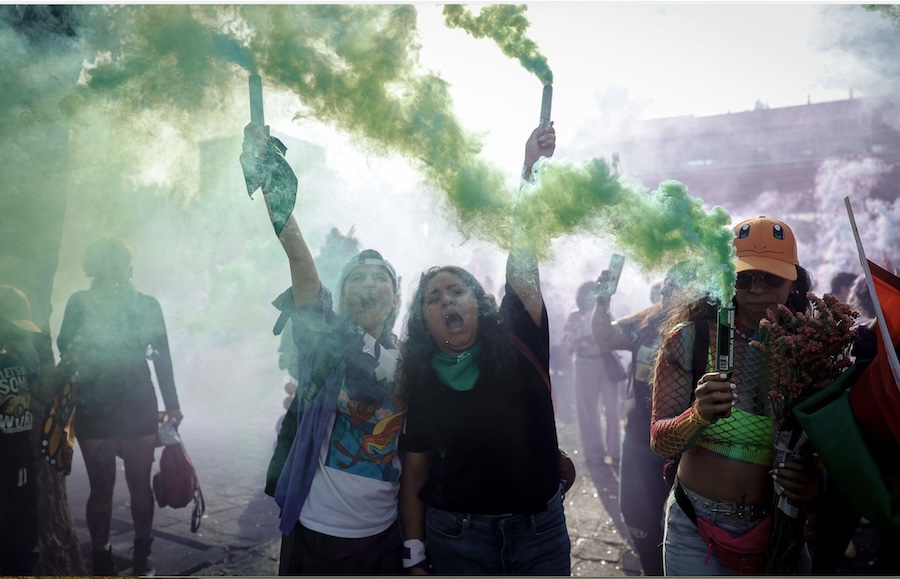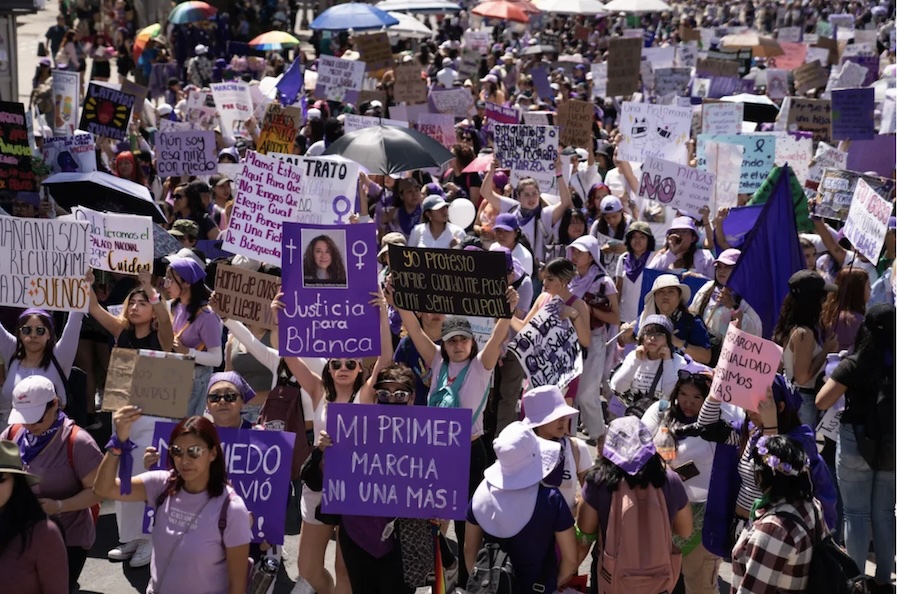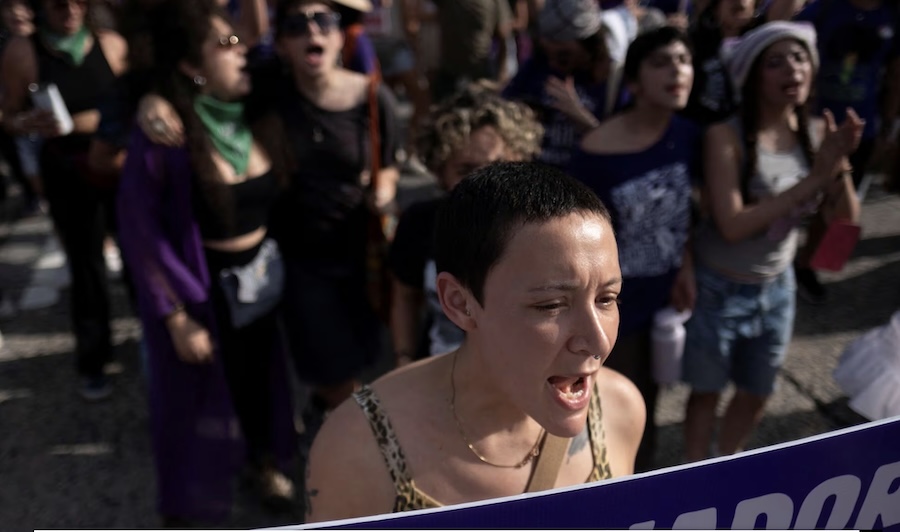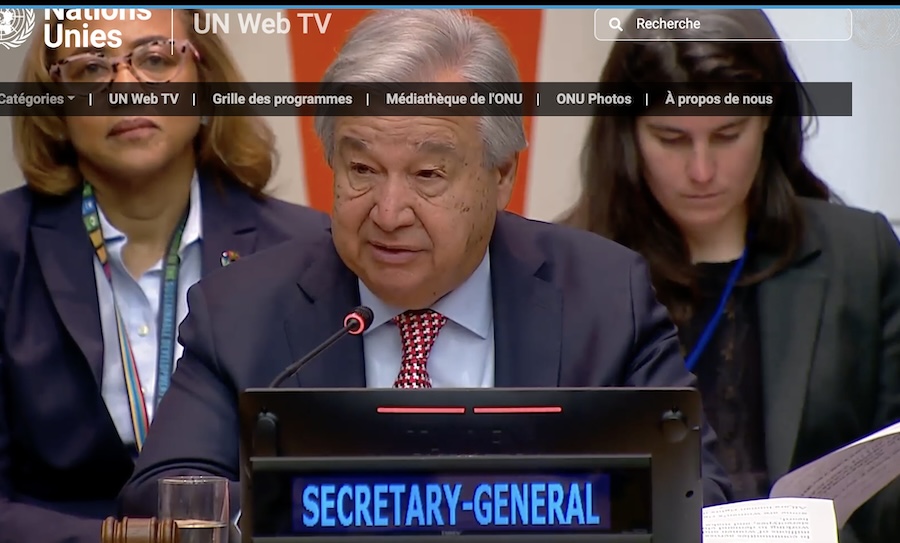FREE FLOW OF INFORMATION .
A survey by CPNN
The following 59 actions in 19 Latin American and Caribbean countries include those listed in Google during the weeks of September 17-28 this year under the key words “International day of peace”, “Dia Internacional da Paz” and “Día Internacional de la Paz”
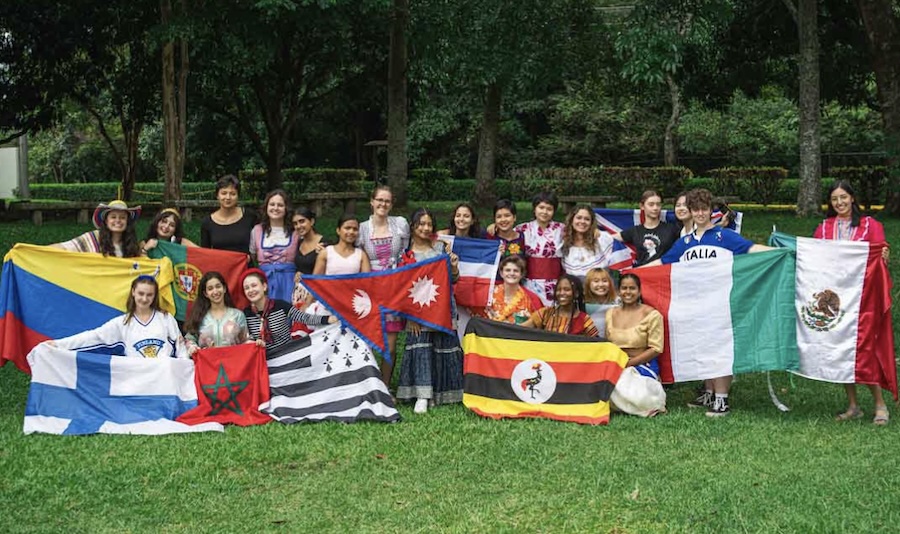
Costa Rica, Santa Ana
Here are excerpts from the articles.
ARGENTINA
BAHÍA BLANCA: For the first time, Bahía Blanca will be the setting for an international event that seeks to promote peace, within the framework of the International Day of Peace. This event has traveled to several capitals of the world. And this time it will be in Plaza Rivadavia. An initiative by renowned visual artist Martín Bonadeo, based in Barcelona, who has worked for years on this project, which has been presented both at the United Nations and to Pope Francis in St. Peter’s Square. Both gave their consent for it to be carried out in different cities around the world, and Bahía Blanca was selected because it had not previously hosted the event.
BELGRANO In the framework of the International Day of Peace, the mayor of San Salvador de Jujuy, Raúl “Chuli” Jorge, led the central commemoration event that took place in Parque Gral, Belgrano, in the space that the city has dedicated to the location of the Peace Arch, a world symbol that decorates squares in different localities of the country and the world.
BUENOS AIRES: Here’s the many actions in Buenos Aires, Argentina: City of Peace and the home of Mil Milenios de Paz Fundación, to celebrate and contemplate the United Nations’ International DAY of Peace, September 21st each year.
COLÓN: On September 21 , the city of Colón will join in the celebration of the International Day of Peace with the first edition of the “Municipal Day of Peace .” The activities will begin with a bike ride that will start from Plaza Artigas and end at the Rugby Club Colón , where various activities will be held focused on raising awareness and promoting peace. The event, organized by the Municipality of Colón in collaboration with several local institutions, will include the planting of an olive tree as a symbol of peace, a talk on the importance of peace in society and various recreational activities. In addition, there will be artistic and cultural presentations, such as songs and readings by the Senior Citizens Choir and the writer María Magdalena Lener, who will present her work.
CORRIENTES: The Rotary Club Río Paraná Corrientes is pleased to invite the community to participate in the Commemoration of the World Day of Peace, which will take place on September 21, 2024 at the prestigious Amado Bonpland Museum of Natural Sciences. This meeting seeks to promote reflection and dialogue on the importance of world peace, offering a space for the active participation of all attendees. The day will feature various activities designed to foster awareness and commitment to peace in our society.
ESQUEL: School No. 179 ‘Sofia Kraiselburd’ commemorated the International Day of Peace with various educational activities. In collaboration with the Salesian School, the educational community promoted values of respect and harmony. . . Students and their families actively participated in decorating the “Snowman” and “La Trochita”. “We are writing messages of peace that will be placed on the doll and in the Peace Square. We have also prepared gifts and souvenirs made by the children and families.”
MALARGÜE: The 2nd Sculptors’ Meeting began on Monday in Malargüe, an activity supported by the Rotary Club and conceived and organized by local sculptor Christian Pietkiewicz. For two weeks, sculptors from different provinces will be creating works in our city. In addition to the creation of sculptures, different activities are carried out, such as dance, music, photography and talks open to the public, designed to encourage exchange between artists and the community. These events seek to bring art closer to the people of Malargüinos and generate spaces for learning and dialogue. The event will end on September 20 with a formal ceremony to commemorate the International Day of Peace, during which the finished works will be presented.
MAR DEL PLATA: Picnic in Primavesi Park to celebrate World Peace Day. The proposal comes from the Collective for Nonviolence and the community is invited to participate in different activities this Saturday, September 21 from 1:00 p.m. to 6:00 p.m. There will be yoga, biodance, meditation, talks, activities for children and open radio. . . At the close of the Picnic, there will be a march with flags and banners in support of the upcoming World March for Peace and Nonviolence that will travel across the five continents and begin on October 2 in San José, Costa Rica.
MENDOZA: Today is the International Day of Peace. In its honor, the Traveling Workshop on Writing for Peace will be held in Mendoza at the Book Fair. . . The workshop is coordinated by writers and teachers Fabiana Mastrangelo (President of Argentina Society of Writers (SADE) Godoy Cruz and leader of SADE Central, Buenos Aires), Zulma Calderón (President of SADE Mendoza) and Marta Ibáñez (Taller Lápiz Creativo).
PUERTO MADRYN: On September 21, Puerto Madryn joins in the commemoration of the International Day of Peace. Following the raising of the flag, a special talk will be given on the meaning of this day and how each of us can be an active part of building a more peaceful world. . . on September 24 at 7 p.m. a training entitled “Sport as a tool to promote peaceful and inclusive societies” will be held , aimed at teachers, physical education teachers and sports institutions.
RECOLETA (BUENOS AIRES): Video of children of Sunrise Montessori school joining with Montessori schools around the world singing for peace.
RESISTENCIA: The Lions Club of Resistencia together with the Leo Club Yaponagá, planted white flowers as a symbol of World Peace. The activity took place on the “Malvinas Veterans’ Path of Honour”, located in the Ejército Resistencia Garrison, and the action was carried out in conjunction with the Malvinas Veterans’ Centre and personnel from the Third Monte Brigade Command. . . The president of the Club, Leon Claudia Kovaluk, said that “it is a day of great emotion, today we are caught up in the feelings of seeing those who were protagonists of war, together with their loved ones demanding Peace.”
SAN GERONIMO AND EL TRAPICHE: Activities to celebrate the day of peace within the framework of the celebrations planned by the Mediation Centers and Rooms of the province to commemorate the International Day of Peace.
SAN JUAN: On world peace day, this September 21st, with a special concert at the Juan Victoria Auditorium, Mozarteum Argentino San Juan will delight us with a night full of rhythm and elegance: the Pianoforte Orchestra in “Jazz Big Band” format . This is an independent orchestra from Mendoza, founded by Leonardo Pittella along with a team, and is made up of some of the most renowned musicians in the region. The repertoire will include works by composers such as Glenn Miller and Benny Golson, with the star piece of the evening being George Gershwin’s famous Rhapsody in Blue.
SANTA FE: From Lalcec Reconquista we want to tell you that together with COLORES POR LA PAZ we will be holding “PintaReconquista” on the International Day of Peace, within the framework of PintaArgentina. . . Once again we will carry out this wonderful activity in our “Nilda Tanino de Enz” merry-go-round, located in Plaza 25 de Mayo, starting at 5:00 p.m. on Saturday, September 21 , where children between 4 and 10 years old, who come to take their traditional ride, will be able to leave us their allegorical drawings. In addition, we will enjoy live painting by the artist Alberto Pucheta, and other surprises.
USHUAIA: The International Day of Peace was commemorated in Ushuaia. Municipal officials accompanied the ceremony held at the Plaza ‘Campana de la Paz’. The Secretary of Parliamentary Relations, Omar Becerra, said that “this global celebration invites us to reflect so that, through small actions, we can all build a more just and equitable society.”
BERMUDA
SOMERSFIELD ACADEMY: Slideshow of photographs from International Day of Peace Ceremony.
BOLIVIA
LA PAZ: On Friday, September 20 at 10:00 am, the Interreligious Meeting for Peace was held, celebrating the International Day of Peace at a meeting center of The Church of Jesus Christ of Latter-day Saints located on Av. 20 de Octubre in La Paz, Bolivia. The event was attended by representatives of various religious traditions, including Zen Buddhism, the Catholic Church, the Islamic Community, The Church of Jesus Christ of Latter-day Saints, among others. . . The meeting concluded with the reading of an Interreligious Declaration for the International Day of Peace, by Brother Hugo De La Fuente on behalf of the Bolivian Interreligious Dialogue, in which the importance of interreligious dialogue was underlined as a pillar for the construction of a more cohesive and peaceful society.
BRAZIL
GUARAPARI: EcoPaz holds walk in celebration of International Peace Day, in Guarapari. Event takes place on September 29th with walk and ecumenical service open to the public. The ecumenical service will be held in Praça da Paz and will bring together, at the end of the walk, representatives of some religious denominations such as the Baptist Church, the Catholic Church and Spiritism, thus demonstrating respect for all beliefs.
UEMA: The Language of Peace in Teaching project at the Timon Campus of the State University of Maranhão (Uema) promotes a workshop on the theme “Non-Violent Communication”. The action begins this Friday (September 20) at the Justiniano Guedes Vasconcelos School, located in the Tamanduá Village, and continues until tomorrow (September 21), in allusion to the International Day of Peace, at the Luiz Falcão School, located in the Estiva community.
CANTO PELO PAZ: A manifesto for life. This is “Canto pela Paz (Let’s Get Along)”, the new single by artist, activist and researcher Victor Kinjo, which will be released on September 20th on the main digital platforms by YB Music, Lyra Noise label. With a strong and current message, in a world marked by wars and climate change, the song is an urgent call for peace and unity between peoples.
COLUMBIA
BOGOTA RADIO: This weekend, prepare for an emotional and revealing journey in honor of the International Day of Peace. Starting Saturday, September 21, Canal Capital’s programming presents a series of documentaries that explore the paths to reconciliation in Colombia , offering moving testimonies and evocative visuals of social and personal transformation.
BOGOTA, LA CANDELARIA: “La Candelaria, the heart of Bogotá, is also the heart of peace and reconciliation. That is why we are inviting you to enjoy the photographic exhibition that we will have in the mayor’s office until September 21. It is a peace event that, together with the Reencuentros Humanitarian Corporation, we want to show and make visible that all people deserve to be searched for and deserve to be found,” said Mayor Angélica María Angarita Serrano.
MEDELLIN: For four days, from September 18 to 21 in Medellin, Columbia University (USA), the GettIn Up Corporation and a large group of allied organizations have coordinated to open a first version of this broad dialogue on Urban Peace and its multiple dimensions. . . Through keynote lectures, thematic panels, presentations and discussion panels, topics such as the geographies and ecologies of peace, institutional architecture for peace, youth reintegration, transitional justice models with multi-crime organizations and others will be addressed. . . On Day 4 there will be a celebration of the International Day of Peace in the Antioquia neighborhood.
MEDELLIN:
In the framework of the commemoration of the International Day of Peace , the Mayor’s Office of Medellín, the Civil Society Peace Month Board and the UN Verification Mission in Colombia will hold a symbolic event on September 21, starting at 10 AM, in San Antonio Park, in the center of the city, next to the work “El Pájaro” by the master Fernando Botero.
COSTA RICA
ALAJUELA: The Juan Santamaría Cultural History Museum will host Peace Week, from September 16 to 21, 2024. The program includes a conversation, a film and a concert, as part of the Art for Transformation and Peace exhibition. Immersive Poetry for Peace 2024.
HEREDIA: Approximately 637 students from the Academic Day School and the Technical Professional College in Guararí in Heredia walked nearly a kilometer and a half for peace this Friday as part of the activities commemorating the International Day of Peace. . . Students displayed banners and posters with positive messages such as “Let us be people of peace” or “It is not enough to talk about peace, one must believe in it and work to achieve it.”
SANTA ANA: More than 200 high school students from different parts of the world will commemorate the International Day of Peace at the United World College. . . The students come from 70 countries such as the United States, Australia, Canada, Chile, China, Colombia, France, Nicaragua, Vietnam, Afghanistan, Brazil, to name a few.
CUBA
REGLA (HAVANA): TogetherForPeace Workshop.,,This is an art workshop to collectively build a representation of Peace. It is held on September 20th on the occasion of the International Day for Peace within the framework of the project Revitalizing the Sociocultural Fabric of the Municipality of Regla, co-financed by the European Union. Children from the Fernando Chenard Piña primary school participate, with whom origami doves will be made with messages in favor of peaceful coexistence and a life free of violence.
DOMINICAN REPUBLIC
ADASEC ASSOCIATION: The Dominican Association for Social, Ecological and Cultural Aid (Adasec) carried out an emotional march in celebration of World Peace Day , with the aim of raising awareness among the population about the importance of achieving inner peace and promoting peaceful coexistence. . . The walk, which brought together citizens of all ages, took place in a festive and reflective atmosphere. Participants spoke inspiring phrases, emphasizing the value of peace in society.
SANTO DOMINGO: Students from the República de Costa Rica Elementary School together with the Prof. Germán Martínez Tavares High School in the Los Ríos sector marched through several streets of this community in search of promoting peace.
“Long live peace”; “No to violence”; “Long live peace”; “No to war”; “Long live peace”; “Peace is love”; “Peace is freedom”; “Peace is humility”; “Long live teachers”; “Long live children”, shouted the students and teachers at the top of their voices during the night.
Question for this article
What has happened this year (2024) for the International Day of Peace?
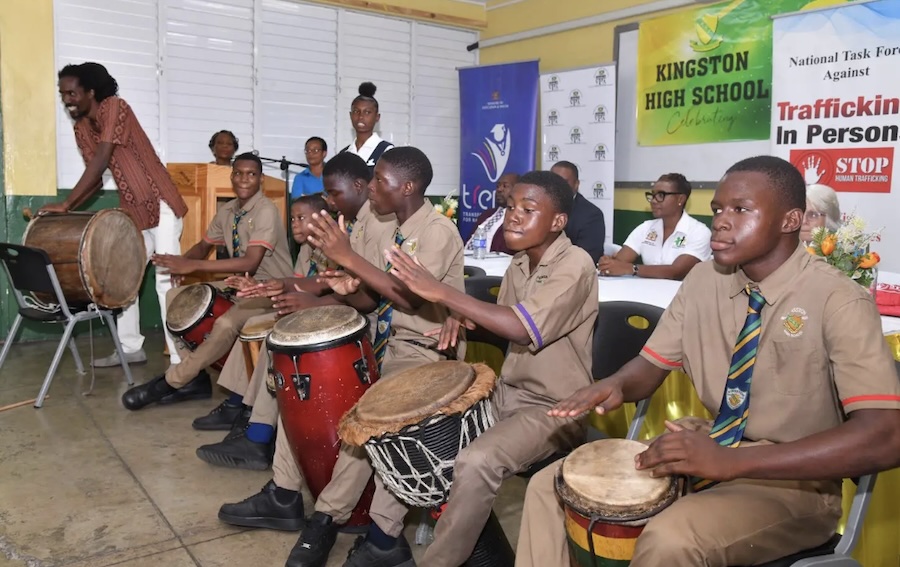
Kingston High School Drummers at the launch of the Peace Gardens in Jamaica
(Survey continued from left column)
ECUADOR
MALECÓN:
Video of children painting with colored handprints for peace in the initiative the initiative “Hands United for Peace” together with @mov_arteporlapaz_ecuador . Hemicycle of the Roundabout, Malecon 2000 on Saturday 21 September (09h00 – 18h00)
QUITO: In the last decade, peace justice has allowed more than 18,000 cases to be resolved nationwide. Through it, the right of citizens to access alternative mechanisms for conflict resolution and to have a system closer to the reality of the communities has been guaranteed. This was recalled by the President of the Council of the Judiciary (CJ), Mario Godoy, during the Solemn Session for the International Day of Peace and the 10 years of the establishment of the Peace Justice System in Ecuador. . . As part of the event, the Judicial Council presented credentials to the justices of the peace, thereby accrediting the work they do in their communities.
TUMBACO: Video of school children celebrating the International Day of Peace at Colegio Cervantes_ofc.
GUADALOUPE
BASSE TERRE (97): The Freedom Butterflies association celebrated the International Day of Peace this Saturday, September 21, by organizing a symbolic march of children for Peace around the Champ d’Arnaud. On the theme “In the footsteps of our children, dreams of a world in peace resonate”, the leaders of Freedom Butterflies welcomed a hundred young people aged 6 to 15 for a symbolic march around the Champ d’Arbaud. Equipped with signs and panels, these children and a few adults took a route through the capital, chanting the slogan: “I am a messenger of peace.”
HAITI
PORT-AU-PRINCE: On the occasion of the International Day of Peace, the organization Haitian Diaspora Resources World Wide issued a statement calling on Haitian citizens to be active promoters of peace in their homes and communities. The organization’s president, Marina Gourgue, encourages Haitians to reflect on their roles in spreading the values of respect, solidarity and love.
HONDURAS
TEGUCIGALPA: The Undersecretary of Cooperation and International Promotion, Cindy Rodríguez, participated in the Forum called “Cultivating a Culture of Peace”, organized by the United Nations (UN) in Honduras. . . She highlighted the importance of holding these spaces, which strengthen collaboration in favor of a culture of peace. . . For her part, the Resident Coordinator of the United Nations System in Honduras, Alice Shackelford, said: “One of the main messages today is that peace requires daily work, every moment, every week, every month, an effort in dialogue, in understanding, in cooperation, this is a culture of peace” Representatives of government institutions, civil society, academia and members of the diplomatic corps accredited in the country participated in the event
JAMAICA
KINGSTON: On the International Day of Peace, Violence Prevention Alliance (VPA), in collaboration with the Ministry of Education and Youth and other partners, launched Peace Gardens and drumming activities in schools across Jamaica to foster peace and environmental stewardship. The launch took place on Friday at Kingston High School.
MEXICO
ANÁHUEC: Invitation to the celebration of the International Day of Peace on September 18 at the Joseph Ratzinger Auditorium.
CAJEME: On the occasion of the International Day of Peace , the municipality of Cajeme and the Technological Institute of Sonora (Itson) have joined forces to carry out the event “Together for Peace” , which seeks to promote a culture of peace within the community. This set of activities, organized by the Municipal Institute of Culture ( Imcca ), began on September 18 and will conclude on the 21st, with various artistic and informative proposals.
CHIAUTEMPAN: In the framework of the International Day of Peace and in an effort to strengthen a Municipal Government that promotes and guarantees full respect for Human Rights, this morning the City Council of Chiautempan signed a collaboration and training agreement with the State Commission on Human Rights (CEDH), thus becoming the first municipality to establish it. . . In addition, during the event, a training course entitled “Human Rights and Culture of Peace in Public Service” was given by Ordóñez Brasdefer.
COLIMA: This Saturday, September 21, starting at 6:00 p.m., the International Day of Peace Festival will be held at Piedra Lisa, as part of the State Government’s activities to promote peace and healthy coexistence among citizens. There will be an exchange module for the campaign, Let’s Play Without Violence, so that children can exchange their war toys for recreational and educational toys.
CUERNEVACA: The UAEM Faculty of Accounting, Administration and Informatics commemorates the International Day of Peace with various conferences. . . During this event, lectures were given by Tomoko Alkawa, ambassador of La Paz; Rubén Gómez , expert in peace experiences from Montevideo, Uruguay; José Acevedo, who spoke about the monument of the Dove of La Paz; as well as the keynote lecture by Dr. Úrsula Oswald Spring on expanded peace and security of CRIM UNAM.
CULIACÁN: In the framework of the International Day of Peace , various civil organizations, groups and citizens gathered this morning in the center of Culiacán to make an urgent call for unity and action in the face of the violence that plagues the capital of Sinaloa. The meeting brought together representatives from more than 30 groups, including the National Union of Parents, Building Spaces for Peace, Culiacán Participa, COPARMEX and SUMATE AC, who joined together under the question ” What is the Culiacán that we want to live in? ” During the demonstration, citizens called on people not to normalize or accept the conditions of violence and fear that persist in the city, which have left more than 60 murders and more than 70 forced disappearances. The organisations demanded that an environment be created where families can walk without fear and where young people can go to school without risk.
GUANAJUATO: The University of Guanajuato, through its Mediation and Conciliation Unit, invites the university community and the general public to take part in the activities that will commemorate the International Day of Peace, to be held next Wednesday, September 11 of this year, starting at 11:00 a.m. in the General Auditorium of the UG Central Building. . . As part of the commemorative program, the UG invites you to participate in the Grand Conference Restorative Justice and the Re-signification of Harm as Elements for the Construction of Peace. . . The program also includes the Interdisciplinary Discussion Deconstruction and Collaborative Transformation of Conflicts.
HUNUCMÁ, YUCATÁN: In the framework of the International Day of Peace and with the objective of promoting healthy coexistence, respect, inclusion to strengthen healthy educational spaces free of violence, more than 450 students from the “Emiliano Zapata” Secondary School accompanied by their families participated in the first “Peace to the Voice” race organized by the Secretariat of Education of the Government of the State of Yucatán. Patricia Sosa Díaz, head of the Coordination for the Prevention of Violence in Basic Education of the Segey, highlighted the importance of sport as a tool to prevent violence and to strengthen camaraderie among students through actions that promote inclusion, empathy and peace among our students.
JALISCO: “Bohemia for Peace” organized in commemoration of the International Day of Peace. Now it’s the turn of Master Carlos Palafox, who shares with us the following information: I’m the Mtro. Carlos Alberto Palafox Luna, high school teacher, lawyer and activist for Peace. Currently I preside the Collective of “Teachers for Peace” which has been working for more than 4 years in favor of the culture of peace and non-violence in schools.
JUAREZ: Students from the Municipal Nursery School celebrate the International Day of Peace. . . The children’s hands were painted with different colors, to later capture it on a canvas, even the teaching staff joined in the dynamic, which was very fun and supportive. Since the color white is representative of peace, everyone attended school dressed in denim clothes combined with either a white blouse or shirt.
MÉRIDA, YUCATÁN: Every September 21, at the initiative of the United Nations, the International Day of Peace is celebrated, and in the midst of this commemoration the Summit for Peace Societies, Ch’abajel, was held in Mérida, Yucatán. The event, which will feature more than 40 speakers, 100 organizations and representatives from 50 governments at all levels, was opened on Thursday by state authorities, organizers and special guests. . . Eunice Rendón, director of Red Viral and Agenda Migrante, as well as curator of the summit, highlighted that over the two days of the summit, peacebuilding will be discussed and insecurity and its causes will be analyzed, since difficult contexts are often the “true enemy” to building a more peaceful society. He also mentioned that even in peaceful territories there are problems that need to be addressed, such as violence against women or addictions among young people.
MEXICO CITY: On the eve of the International Day of Peace, which is commemorated on September 21, the National Union of Education Workers (SNTE) launched the campaign Arm yourself with courage for a Culture of Peace! Get informed, learn and act. The Secretary General of the SNTE, teacher Alfonso Cepeda Salas, called for participation in the campaign, which aims to promote values of respect, equality, solidarity, tolerance and empathy; in addition to the daily practice of dialogue, negotiation, peaceful conflict resolution, harmonious coexistence and inclusion . . During the launch of the strategy, a message was transmitted by the Secretary of Security and Citizen Protection, Rosa Icela Rodríguez Velázquez, who recognized the commitment of teachers in favor of the Culture of Peace, under the leadership of teacher Alfonso Cepeda. She invited education workers to continue collaborating so that schools continue to be safe places.
NUEVA LEON The State Government confirmed the attendance of 18 Nobel Peace Prize winners to participate in the World Summit to be held in Nuevo León from September 18 to 21. Former presidents such as Lech Walesa of Poland, José Manuel Ramos-Horta of East Timor and Oscar Arias Sánchez of Costa Rica will participate in the meeting, said the Secretary General of Government, Javier Navarro Velasco, who assured that the laureates will meet with union leaders in different areas to share their success stories. . . On September 21, the date on which the International Day of Peace is commemorated, a march will take place that will start at the Marco Museum and end at the Government Palace. . . . For the World Summit, 1,200 young people from more than 70 universities across the country will participate in 50 free workshops over three days, as well as panels with all the personalities who will attend. The Nobel Peace Prize Laureates World Summit is an annual event that brings together Nobel Peace Prize winners, global leaders, organizations, activists, and young people committed to promoting peace, human rights, and conflict resolution.
QUERÉTARO: The International Forum of Culture and Education for Peace (FICYEP) was held on September 19 and 20 at the Autonomous University of Querétaro, with the theme ‘Cultivating peace through diversity’, in order to raise awareness of the problem of inclusion of diverse groups in society, such as the LGBTQ+ community, people with disabilities and people with indigenous cultures. The aim was to raise awareness among participants to reconceptualize peace through diversity for the generation of cultural projects in adverse contexts. . . Conferences, talks and remote discussions are included, with prominent people in peace work from other countries, such as Argentina, Peru, Brazil and Chile.
REYNOSA: In the framework of the International Day of Peace, students and teaching staff from school institutions in the municipality met to commemorate the 25th anniversary of the promotion of peace worldwide. This celebration was attended by authorities from the Regional Center for Educational Development, led by teacher Dina Maybe Castillo Enríquez, as well as representatives of the parents’ association, chaired by Sarahí Garza and Ileana Guerrero.
ZACATECAS: “Peace is not only the absence of conflict, but a state in which respect, justice and solidarity are fundamental pillars of our society,” said the head of the Doctorate Program in Humanities with a specialty in Heritage and Culture for Peace, Lucía Muñoz Castañón, within the framework of the commemoration of the International Day of Peace – September 21. . . The program for this commemoration included the conference “Peace, as the primary objective of human rights,” given by the president of the Human Rights Commission of the State of Zacatecas, Maricela Dimas Reveles. The presidium was made up of the general secretary of the Autonomous University of Zacatecas, Ángel Román Gutiérrez, the Ambassador of Peace in Zacatecas and Research Professor of the UAZ, Laura Gema Flores García, as well as the training director of the Human Rights Commission, Luis Manuel Gallardo -who also participated in the Human Rights Conference-.
PANAMA
UNIVERSITY OF PANAMA: Ministry of Social Development of Panama. Acting Minister Ricardo Landero participated in an enriching discussion at the National University of Panama, commemorating the International Day of Peace.
PERU
PIURA: Universal Peace Federation ((UPF) Peru and UPF Piura branch celebrate the International Day of Peace. The hall of the Municipality of Piura gathered Ambassadors for Peace, students, personalities of the region, the Peru National Police and guests in general. . . The program included the presentation of the girl Ayko Yamile Zapata Castro who recited the Poetry titled: “Inner peace is the calm to my anguish”. The presentation of Singer Ambassador Wilfredo Mendoza Castillo who delights with his songs to the attending audience.
SANTA LUCIA
OFFICIAL GOVERNMENT WEBSITE: On 21 September, Saint Lucia joins the rest of the world in observance of International Day of Peace.
TRINIDAD AND TOBAGO
SOUTHWEST TOBAGO: The Rotary Club of Southwest Tobago has joined the world in observing International Day of Peace. As part of this observance, the Rotary Club erected peace poles at Signal Hill Secondary and Scarborough Secondary Schools in Tobago.
VENEZUELA
VENEZUELAN NATIONAL ASSEMBLY: During the ordinary session of the Ordinary Session today, Tuesday, September 24, 2024, the National Assembly (AN) unanimously approved the Draft Agreement for the International Day of Peace . In accordance with the provisions of Article 111 of the Internal Regulations and Debates of the National Assembly, the First Vice President, Pedro Infante, highlighted the importance of maintaining peace in the country.

